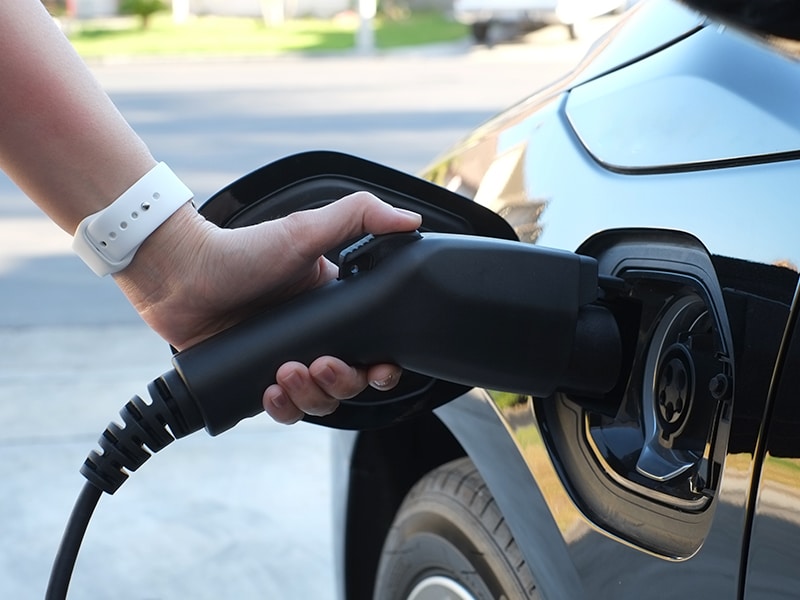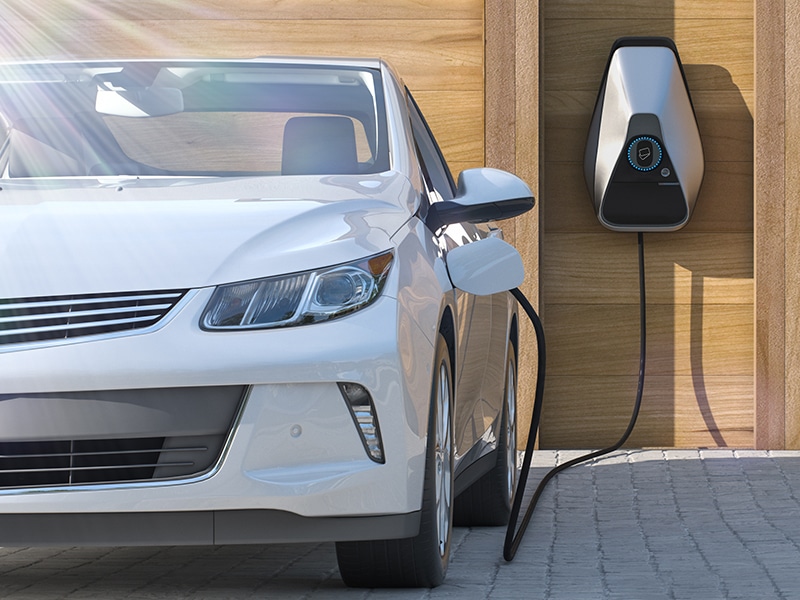
You’ve got your electric car (or looking at one) and now you’re wondering how to charge it? What should you look into when it comes to choosing your home charger?
6 tips for choosing your home charge point
One of the most amazing things about electric cars is that you can fill up at home – as if you have your own private petrol station. And even more incredibly, you can fill your car up for as little as £1.20 with the right combination of charge point and home electricity tariff.
In a recent Fully Charged episode, Maddie Moate installed her first home charge point. Here are six things for you to consider as you go on the same journey.
Let’s begin with the smart features (how you can save a lot of money and carbon) and then take a look at the physical stuff (like, how does it look…?).
Once you’re clued up, the Rightcharge website is a great place to compare options.
Smart features
The Government OLEV grant for up to £350 and the additional ‘EST grant’ for up to £300 in Scotland only apply to smart charge points, so these are often cheaper to install than their ‘dumb’ counterparts.
However, here are another three reasons why they’re a great choice:
1. Smart charging
Charging is cheaper and cleaner overnight (less gas and more renewables means the grid is on average 25% cleaner). A smart charger will connect to your phone. Plug in, tell it when you need the car (e.g. 7am tomorrow morning), and your charger will calculate when to start and stop the charge for the lowest cost and carbon*. You will need to switch to a home electricity tariff with cheaper overnight pricing (often known as an ‘EV tariff) to make the most of this. The cheapest of these tariffs, like the Go Tariff from Octopus Energy, can be as low as 5p per kWh overnight. This lowers the energy bills of the average driver by over £200 a year compared to ‘dumb charging’.
2. Solar charging
Do you have solar panels or are you considering them? I definitely recommend looking at a charge point with Solar Charging capability. If you start producing more solar power than you’re using in the home, the charger will start charging to absorb any extra electrons into the car. You can of course tell these charge points to charge up quickly and ignore the solar, when you need the car quickly. There are a few charge points with this feature and the most prominent of these is probably the Zappi charger from MyEnergi, a UK-based manufacturer, who were the first to create the Solar Charging concept.
3. Fuse protection (also known as ‘load balancing’)
Sometimes, charge points used to have to be limited to slower charging to avoid any risk of blowing a home’s fuse. Now, due to Fuse Protection, anyone can take advantage of the full power available (all home chargers are capable of ‘7 kilowatts’ or ‘7 kW’). Your installer will advise you on this, but it’s a good one to know about. It makes sure that most of the time you can charge at full speed, without ever worrying about your home’s fuse limit. Chargers with Fuse Protection temporarily lower the power to your car if they notice that you’ve turned on a lot of electrical appliances in the house.
*Your in-car settings might be able to schedule charging too. However, charge point software today is more convenient and accurate, which can mean a bit less cost and carbon compared to using the car’s timer.
Physical features
Once you’re happy with the smart features, the next three things to consider relate to how it will look on your wall and whether it makes sense to buy ‘tethered’ or ‘untethered’ (more on this below).
4. Aesthetics
This is, of course, down to your preferences. Charge points come in different shapes, sizes and colours. It may be visible on the front of your house so it might make sense to get one that looks good! For those that value quality and looks, the Andersen A2 is at the premium end of the market and includes a compartment to hide the cable, capped with a sleek magnetic lid. For those looking for a more discrete solution, the EO Mini Pro is small and inconspicuous. And there are all sorts of options in between.
5. The cable
‘Tethered’ or ‘untethered’? Tethered means the cable that you plug into your car is attached to the charge point. Untethered means the charge point is a socket and you will use your car’s own cable to plug in. Tethered makes life a bit easier: unwrap the cable from around the charge point and plug in. Simple. The two downsides are that tethered can look a little less tidy, and it’s not a good option if you have an older car with a ‘Type 1’ socket. Cars used to have Type 1 sockets for home charging and now have switched to Type 2. If you have a Type 1 car now, your next car is likely to be Type 2. So, an untethered charge point, which can be used with both types, is the way to go.*
6. Earth rod
Most charge points are earthed for safety using a metal spike that goes into the ground near the charger, known as an ‘earth rod’. However, some charge points have internal earthing, which can mean a tidier looking install on your home and no need to disturb your driveway or garden.
*You can find out if your car has Type 1 or Type 2 socket by clicking ‘Find my charger’ and checking the top of the results page on Rightcharge.
To wrap up!
So, in summary, so long as you’re happy to consider switching your home electricity tariff, a smart charge point can save you a lot of money and carbon every year. Keep an eye out for the Solar Charging feature if you have solar panels or are considering them, and check with your installer to see if they recommend choosing a charger with the Fuse Protection feature.
You can compare the aesthetics and prices of all options on Rightcharge, and check out whether your car (or perhaps your dream car) has a Type 1 or Type 2 socket, which will help you decide on the tethered versus the untethered option. If you have any questions, please feel free to get in touch: charlie.cook@rightcharge.co.uk
About the author
Charlie is the Founder of Rightcharge, the UK’s only comparison site for home charge points. Charlie started his career as an engineer at CERN, the particle physics lab in Geneva, and went on to work on car charging solutions at Octopus Energy and Octopus Electric Vehicles before starting Rightcharge.






